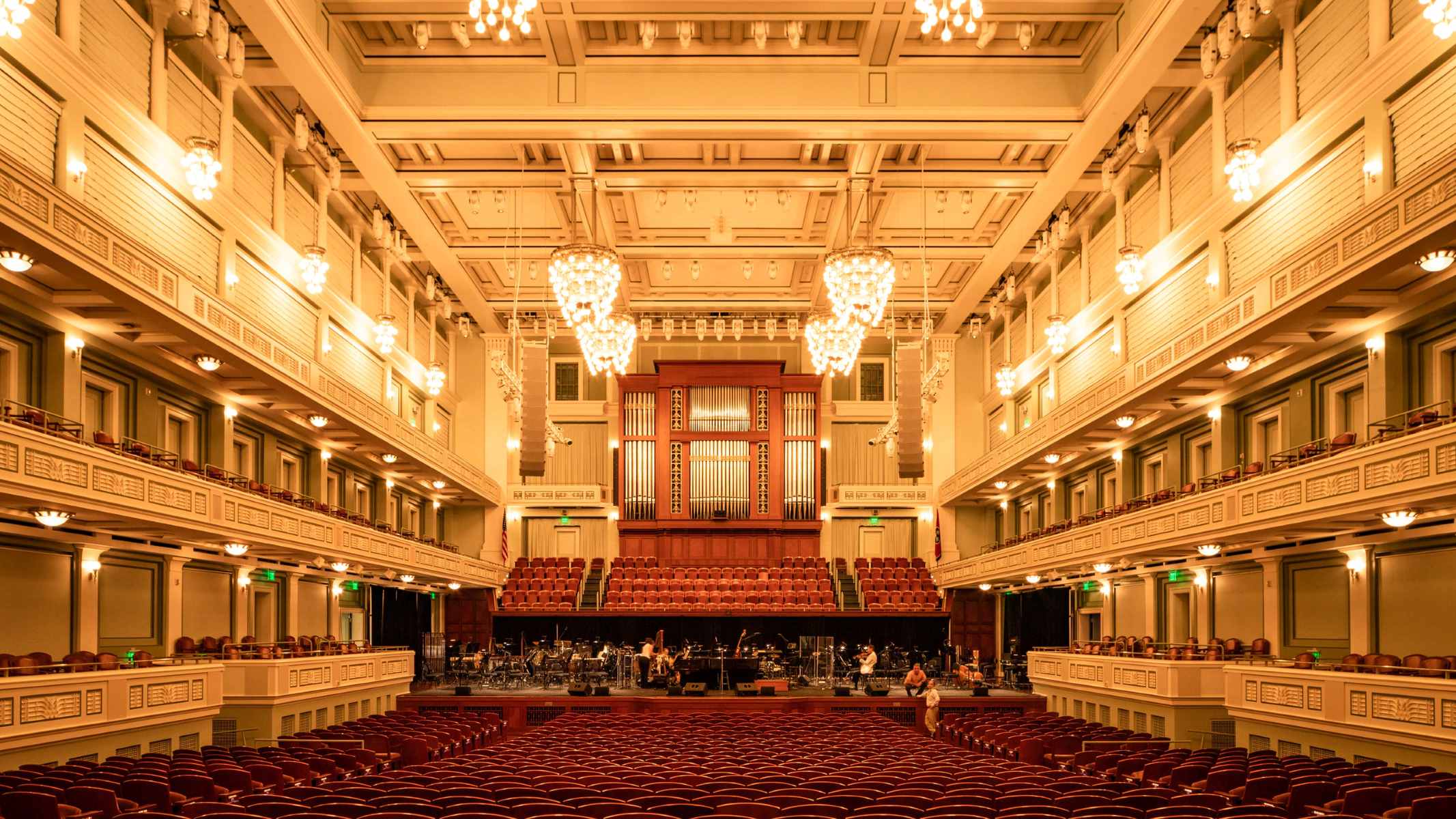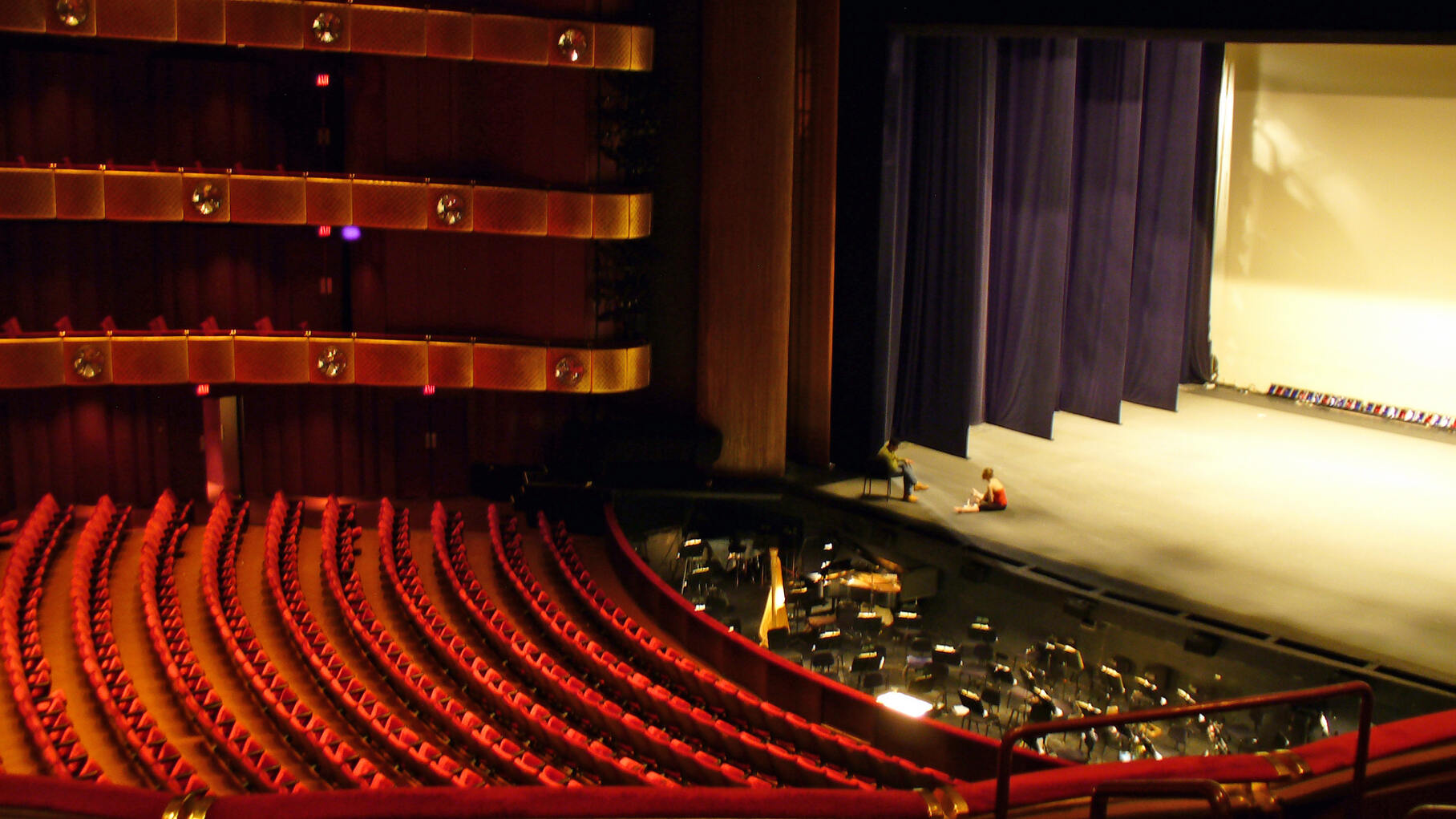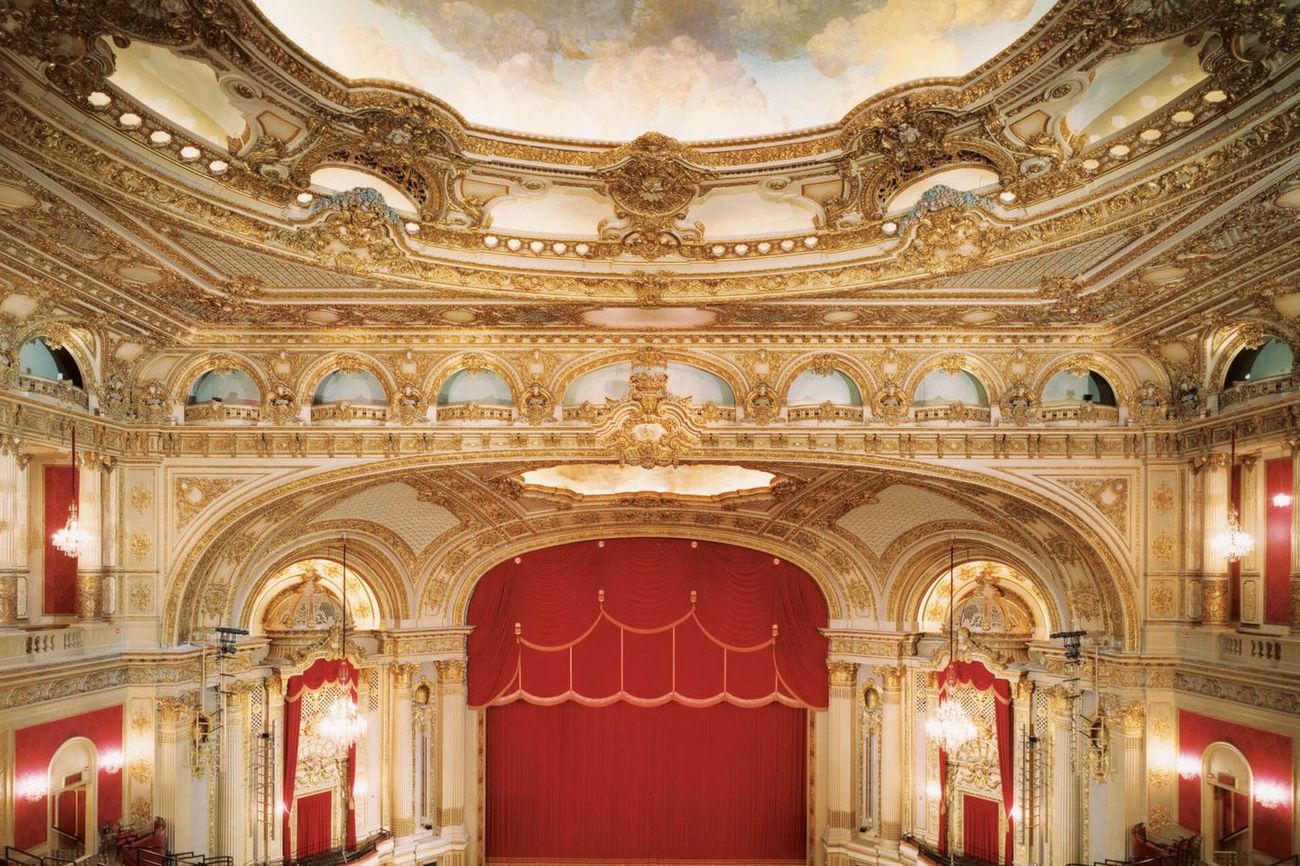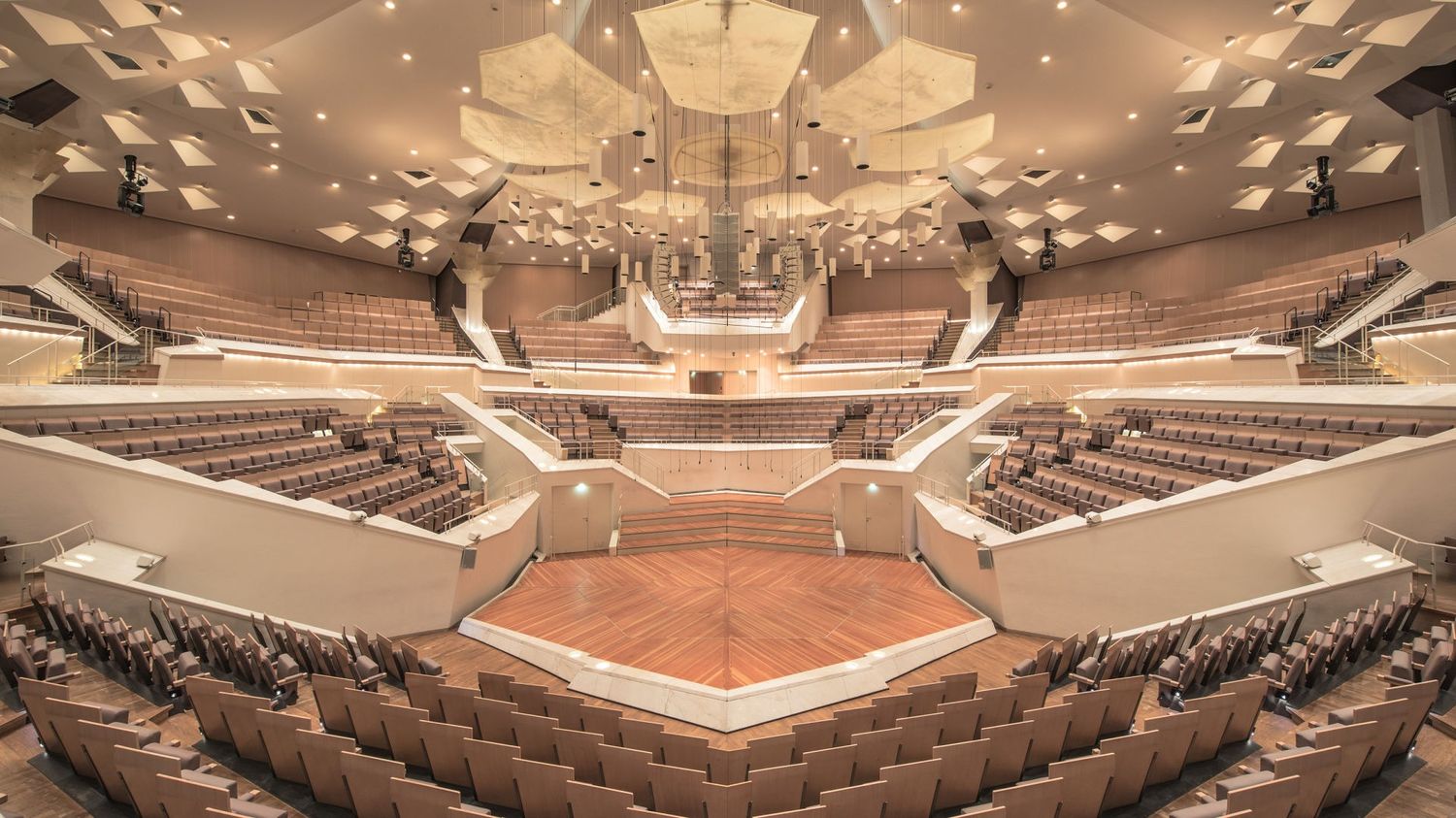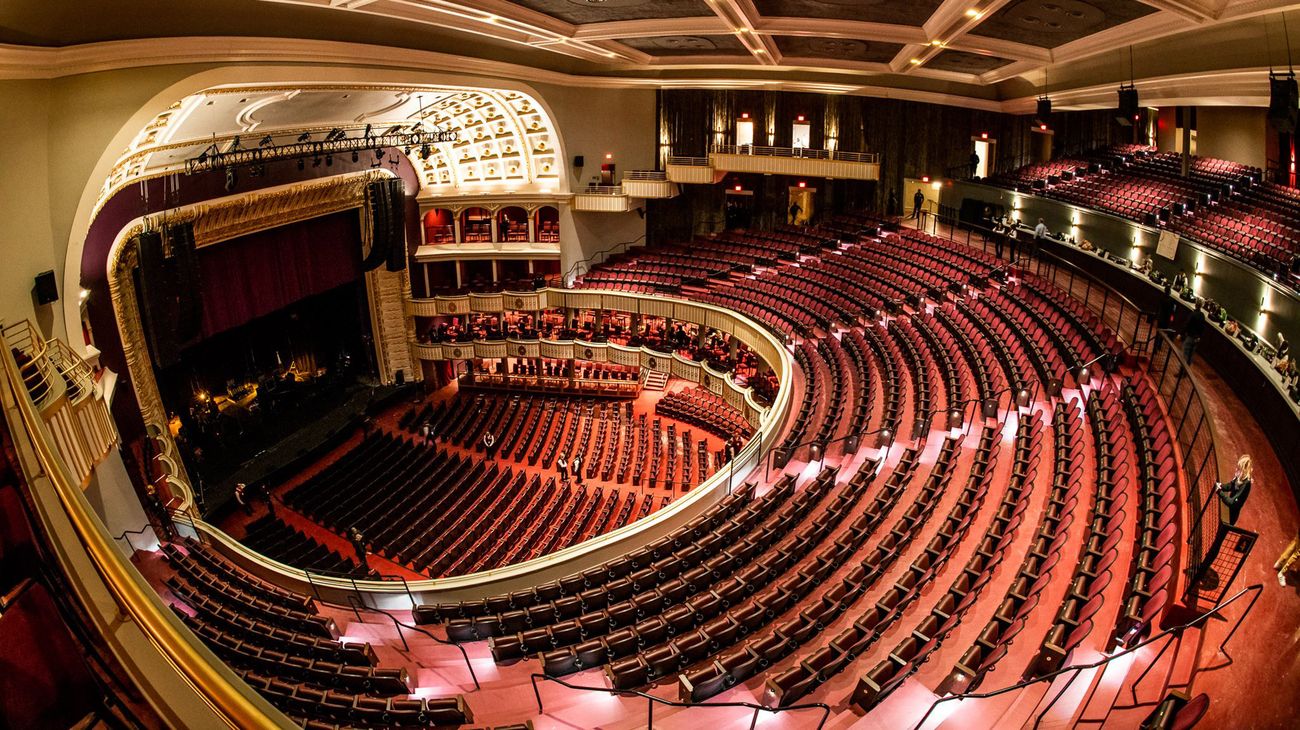Home>Genres>Symphony>How Many Will Boston Symphony Hall Seat


Symphony
How Many Will Boston Symphony Hall Seat
Modified: January 22, 2024
Find out the seating capacity of Boston Symphony Hall. Discover how many people this iconic symphony venue can accommodate.
(Many of the links in this article redirect to a specific reviewed product. Your purchase of these products through affiliate links helps to generate commission for AudioLover.com, at no extra cost. Learn more)
Table of Contents
Introduction
Boston Symphony Hall, renowned for its exceptional acoustics and grand design, is one of the most iconic concert halls in the world. Located at 301 Massachusetts Avenue in Boston, Massachusetts, this historic venue has been the home of the Boston Symphony Orchestra since its opening in 1900.
The symphony hall has a rich history and has hosted countless renowned musicians, conductors, and orchestras from around the world. Its elegant architecture and exquisite interior make it a favorite among both performers and audiences.
In this article, we will explore the fascinating topic of the seating capacity of Boston Symphony Hall. We will delve into the history of the hall, the factors that affect its seating capacity, and the renovations that have occurred over the years. Additionally, we will compare the seating capacity of Boston Symphony Hall with other prominent concert halls.
Whether you are a music enthusiast, a concert-goer, or simply curious to learn more about this magnificent venue, this article will provide you with a comprehensive understanding of how many people Boston Symphony Hall can accommodate.
History of Boston Symphony Hall
The history of Boston Symphony Hall dates back to the late 19th century when the Boston Symphony Orchestra was in need of a new concert venue. The orchestra had outgrown its previous home, the Old Boston Music Hall, and desired a space that would not only accommodate a larger audience but also provide exceptional acoustics.
In 1898, a committee was formed to oversee the design and construction of a new concert hall. The renowned architect, Charles F. McKim of the firm McKim, Mead & White, was commissioned to create a space that would rival the great concert halls of Europe.
The construction of Boston Symphony Hall began in February 1899, and less than a year later, on October 15, 1900, the hall was officially opened to the public. The inaugural concert featured the Boston Symphony Orchestra under the baton of conductor Wilhelm Gericke.
The design of Boston Symphony Hall was inspired by the neoclassical style, with a focus on providing optimal acoustics for musical performances. The hall features a rectangular shape with a long, narrow stage and a horseshoe-shaped balcony that wraps around the main floor.
One of the hall’s most notable features is its use of “vineyard-style” seating, where the main floor of the hall is divided into multiple sections that rise at a steep angle. This design not only ensures excellent sightlines for the audience but also helps to enhance the acoustics by dispersing sound throughout the hall.
Over the years, Boston Symphony Hall has become renowned for its exceptional acoustics, with musicians and conductors praising its warm and vibrant sound. The hall has been recognized as one of the best concert halls in the world and has been the inspiration for the design of many other concert venues.
The rich history of Boston Symphony Hall is intertwined with the legacy of the Boston Symphony Orchestra and has played a significant role in shaping the cultural landscape of Boston and the world of classical music.
Seating Capacity of Boston Symphony Hall
The seating capacity of Boston Symphony Hall has undergone changes throughout its history. Initially, when the hall was first opened in 1900, it had a seating capacity of approximately 2,625. This included seats on the main floor, in the balcony, and in the rear and side boxes.
However, over the years, modifications and renovations have taken place, resulting in changes to the seating capacity. The hall has been expanded, with the addition of side balconies and the removal of some of the rear boxes. These changes were made to improve sightlines for the audience and create a more immersive concert experience.
Currently, Boston Symphony Hall has a seating capacity of around 2,625 to 2,800, depending on the configuration of the seating arrangement. The exact capacity can vary slightly due to the addition or removal of seats during specific concerts or events.
The seating arrangement in Boston Symphony Hall is designed to provide an intimate and immersive experience for the audience. The vineyard-style seating ensures that the distance between the performers and the audience is minimized, creating a sense of proximity and enhancing the acoustics of the hall.
It’s worth noting that along with the traditional seating, Boston Symphony Hall offers standing room areas for certain performances. These standing room areas provide an affordable option for those who prefer a more casual concert experience or want to be closer to the stage.
For larger productions, the stage area in Boston Symphony Hall can be extended by removing some of the seating to accommodate additional musicians or performers. This flexibility allows for a versatile range of performances, from small chamber ensembles to large-scale symphony orchestras.
Overall, while the seating capacity of Boston Symphony Hall has evolved over time, it has always been designed with the goal of providing the best possible experience for both performers and audiences. The careful attention to acoustics and sightlines ensures that every seat in the hall offers a memorable and immersive concert experience.
Factors Affecting Seating Capacity
Several factors can influence the seating capacity of Boston Symphony Hall. These factors include the design and layout of the hall, the need for sightlines, and the space required for performing artists and equipment.
The architectural design of Boston Symphony Hall, with its vineyard-style seating, can impact the overall seating capacity. The steep rise of the seating sections ensures that each seat has a clear view of the stage, maximizing sightlines and ensuring an optimal concert experience. However, this design also means that the seating capacity might be slightly reduced compared to a hall with a traditional flat-floor layout.
Another factor that affects seating capacity is the need for space for performers and their equipment. Symphony orchestras often require a large stage area to accommodate multiple musicians, instruments, and other performance elements, such as a choir or soloists. Therefore, the layout of the stage and the allocation of space for performers can influence the overall seating capacity of the hall.
The acoustic considerations in a concert hall are also crucial in determining the seating capacity. The placement of sound-reflecting surfaces, such as walls, ceiling, and balcony, and the materials used in their construction, can impact the quality and clarity of sound throughout the hall. These considerations might affect how the seating sections are arranged and potentially impact the overall seating capacity.
Additionally, safety regulations and guidelines play a significant role in determining the seating capacity of Boston Symphony Hall. Fire codes, building regulations, and accessibility requirements all need to be taken into account to ensure the safety and comfort of the audience. These regulations might dictate the width of aisles, the placement of exits, and the allocation of wheelchair-accessible seating areas, which can impact the overall seating capacity.
It is important to note that while seating capacity is a crucial consideration in a concert hall, the ultimate goal is to provide an exceptional musical experience for the audience. The layout and design of the hall must strike a balance between maximizing seating capacity and ensuring optimal acoustics, sightlines, and comfort for both performers and attendees.
Overall, several factors, including the architectural design, space requirements, acoustic considerations, and safety regulations, all contribute to the seating capacity of Boston Symphony Hall. By carefully considering these factors, the hall can offer a superb concert experience for both the artists and the audience.
Renovations and Changes in Seating Capacity
Throughout its illustrious history, Boston Symphony Hall has undergone several renovations and changes that have impacted its seating capacity. These renovations were aimed at improving the overall concert experience, enhancing the acoustics, and adapting to the changing needs of performers and audiences.
One significant renovation took place in 1948 when architect Howard McKee redesigned the interior of the hall. This renovation included the removal of some of the rear boxes, allowing for a larger seating capacity in the main floor and balcony areas. The changes made during this renovation increased the overall capacity of the hall and improved sightlines for the audience.
Another notable renovation occurred in 1995, led by architect Hugh Hardy. The goal was to restore and enhance the hall’s acoustics while also addressing issues with accessibility and expanding the lobby space. As part of this renovation, changes were made to the design of the interior walls and ceiling to improve sound diffusion and resonance. While these changes did not directly impact the seating capacity, they aimed to create a more immersive audio experience for the audience.
Furthermore, in 2018, Boston Symphony Hall underwent a renovation project to modernize its facilities and address structural issues. This renovation included upgrades to the seating, lighting, and sound systems, as well as improvements to accessibility features and restrooms. While the seating capacity remained relatively unchanged, these updates ensured that the hall continues to provide a comfortable and enjoyable experience for all attendees.
It is worth noting that the seating capacity of Boston Symphony Hall can be adjusted for specific performances or events. The addition or removal of seats can accommodate varying needs, from intimate chamber concerts to larger orchestral performances. This versatility allows the hall to adapt to specific artistic requirements while still maintaining its overall seating capacity.
In summary, Boston Symphony Hall has undergone significant renovations over the years to improve its acoustics, accessibility, and overall concert experience. While these renovations have not always directly impacted the seating capacity, their focus has been on enhancing the quality of sound and comfort for the audience. The hall’s ability to adjust the seating arrangement further allows for flexibility in accommodating different types of performances. These renovations and changes have ensured that Boston Symphony Hall remains a premier concert venue, offering a world-class experience for both performers and attendees.
Current Seating Capacity of Boston Symphony Hall
The current seating capacity of Boston Symphony Hall remains around 2,625 to 2,800, depending on the seating configuration for a specific performance. This capacity takes into account the seating on the main floor, the balcony, and the boxes.
The main floor of Boston Symphony Hall offers a combination of rows and sections, rising at a steep angle to provide excellent sightlines for the audience. The balcony, located above the main floor, offers additional seating options. The boxes, located on both sides of the main floor and balcony, provide more private and intimate seating areas for attendees.
Within the seating sections, Boston Symphony Hall offers various types of seats, including standard seats and box seats. The seats are designed to provide comfort and an optimal concert viewing experience, ensuring that every audience member can fully enjoy the performance.
It is important to note that the seating capacity can be adjusted for certain performances or events. For instance, the addition or removal of seats on the main floor or the extension of the stage area can accommodate different production requirements and potentially alter the overall seating capacity for a specific performance. These adjustments are made to ensure that the seating arrangements best serve the needs of the performers and the audience.
Furthermore, Boston Symphony Hall offers standing room areas for certain performances, providing an alternative option for those who prefer a more casual concert experience or want to be closer to the stage. These standing room areas allow for additional space and flexibility in accommodating more attendees.
Overall, the current seating capacity of Boston Symphony Hall provides an intimate and immersive concert experience. The careful design of the seating sections, along with the hall’s renowned acoustics, ensures that every seat offers an exceptional view and auditory experience. Whether you are seated on the main floor, in the balcony, or in the boxes, attending a performance at Boston Symphony Hall guarantees a memorable and captivating experience.
Comparison with other Concert Halls
When comparing Boston Symphony Hall with other notable concert halls around the world, it becomes evident that each venue has its own unique characteristics and seating capacities that contribute to the overall concert experience.
One such renowned concert hall is the Royal Albert Hall in London, England. Known for its iconic domed architecture, the Royal Albert Hall boasts a seating capacity of approximately 5,272. This vast capacity allows for larger-scale performances and attracts a wide variety of artists and orchestras from around the globe.
In contrast, the Concertgebouw in Amsterdam, the Netherlands, is renowned for its exceptional acoustics and intimate atmosphere. Despite its relatively smaller seating capacity of around 1,974, the Concertgebouw is celebrated as one of the finest concert halls in the world, attracting top-tier orchestras and musicians.
An example of a concert hall with a contemporary design is the Walt Disney Concert Hall in Los Angeles, California. With a seating capacity of approximately 2,265, the Walt Disney Concert Hall offers a visually stunning and acoustically impressive space, combining modern aesthetics with exceptional sound quality.
When comparing Boston Symphony Hall to these esteemed concert halls, it becomes clear that its seating capacity falls within a similar range. However, what distinguishes Boston Symphony Hall is its vineyard-style seating, which prioritizes exceptional sightlines and acoustics for a more intimate and immersive concert experience.
Additionally, Boston Symphony Hall’s rich history and association with the esteemed Boston Symphony Orchestra further enhances its reputation. The hall’s renowned acoustics, paired with its elegant architecture, contribute to its status as one of the premier concert halls in the world.
While seating capacity is an important consideration, it is worth noting that it is just one aspect that contributes to the overall concert experience. Factors such as acoustics, sightlines, architectural design, and the prestige and history of the venue all shape the unique character of a concert hall and its appeal to artists and audiences.
Ultimately, whether attending a performance at Boston Symphony Hall or any other world-class concert hall, the priority is the exceptional musical experience provided by skilled performers, superior acoustics, and a captivating atmosphere.
Conclusion
Boston Symphony Hall stands as a testament to architectural brilliance and exceptional acoustics. With a seating capacity of approximately 2,625 to 2,800, this historic venue has been captivating audiences for over a century. Its vineyard-style seating arrangement ensures that every seat offers optimal sightlines and an immersive concert experience.
The hall’s rich history, renowned architecture, and association with the esteemed Boston Symphony Orchestra have solidified its standing as one of the world’s premier concert halls. Throughout the years, renovations and changes have been made to enhance the overall concert experience, improve acoustics, and address evolving needs.
When compared to other prestigious concert halls, Boston Symphony Hall holds its own with its unique design and intimate atmosphere. From the grandeur of the Royal Albert Hall to the intimate elegance of the Concertgebouw, each concert hall offers its own distinctive qualities that shape the concert experience.
While seating capacity plays a vital role, the true essence of Boston Symphony Hall lies in its commitment to providing exceptional musical experiences. The hall continues to attract world-class artists and orchestras, drawing audiences from around the globe who seek the pinnacle of musical performances.
So whether you find yourself seated in the main floor, the balcony, or the boxes of Boston Symphony Hall, you can be assured of an unforgettable concert experience. The captivating acoustics, combined with the rich history and esteemed reputation of this iconic venue, will undoubtedly leave a lasting impression on every attendee.
In the end, Boston Symphony Hall stands as a shimmering jewel in the musical landscape, a testament to the power of music, and a destination that continues to inspire both performers and audiences alike.

